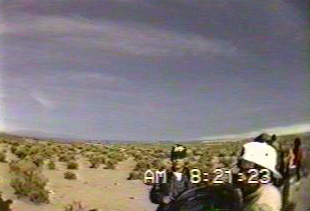
Through the occasional addition of a leap second. UTC is based on International Atomic TimeĪnd is adjusted to remain within 1 second of Universal Time (UT1) While Universal Time (UT1) is based on the rotation of Earth in relation to distant celestial objects (stars and quasars), UTC is one of several closely related successors to Greenwich Mean Time (GMT) įor most common purposes, UTC is synonymous with GMT, although GMT is no longer precisely defined by the scientific community The primary time standard by which the world regulates clocks and time It is sometimes called the "center line" or "centerline". The central line is the locus of points of intersection of the axis of the Moon's shadow with the surface of Earth. However, a portion of the umbra or antumbra misses Earth throughout the eclipse and the resulting ground track has just one limit.Ĭentral solar eclipses with one limit can be either total, annular or hybrid. The umbra or antumbra falls entirely upon Earth so the ground track has both a northern and southern limit.Ĭentral solar eclipses can be either total, annular or hybrid.Ī solar eclipse in which the central axis of the Moon’s shadow cone traverses Earth. In other words, the motion of a celestial body can be predicted assuming the object's entire mass is concentrated into one single point called the center of mass.Ī solar eclipse in which the central axis of the Moon’s shadow cone traverses Earth thereby producing a central line in the eclipse track. In orbital mechanics, the equations of motion of celestial bodies (stars, planets, moons, etc.) are formulated as point masses located at the centers of mass. In the case of the Moon, the offset between the center of mass and center of figure is ~0.5 kilometers. If the distribution of mass is not uniform, then the center of mass does not coincide with the center of figure. The center of figure of a celestial body (e.g., planet, moon) is the apparent center of the object with respect to its surface and takes into account irregularities in its shape. Brown's lunar theory was introduced in the major national astronomical almanacs. The number given to each lunation beginning at the first new moon of 1923, The local circumstances at the observer's position can then be calculated including the eclipse contact times, eclipse magnitude and the duration of totality (or annularity). Next, the shadow cone is projected onto Earth's surface including the effects of Earth's rotation, the flattening of Earth and the latitude, longitude and elevation of the observer. This plane passes through the center of Earth and is oriented perpendicular to the Moon's shadow axis. They describe the movement of the Moon's shadow with respect to the fundamental plane.
Umbra eclipse definition series#
The Besselian elements are a series of time dependent variables used to calculate various aspects of a solar eclipse.

See: Moon at Perigee and Apogee: 2001 to 2100. The Moon's true distance at apogee varies from 404,042 to 406,725 km because of gravitational perturbations of the Sun and Earth The Moon's mean distance at apogee is 405,504 km The point along the Moon's orbit that is farthest from Earth See: Earth at Perihelion and Aphelion: 2001 to 2100. The point along a planetary orbit that is farthest from the Sun Įarth's mean distance at aphelion is 152,097,701 km Įarth's true distance at aphelion varies from 152,083,140 km to 152,104,533 km because of gravitational perturbations of the Sun, Moon and planets It is similar to the penumbra in that the Sun is only partially blocked by the Moon.įrom within the antumbra, the Sun appears larger than the Moon which is seen in complete silhouette.Īn annular eclipse is seen when an observer passes through the antumbra. The antumbra is that part of the Moon's shadow that extends beyond the umbra. The actual duration can vary by several days due to the gravitational perturbations of the Sun on the Moon's eccentric orbit. The length of the mean anomalistic month as calculated for the year 2000 is 27.55455 days (27d 13h 18m 33s) The time required for the Moon to make one revolution around its orbit with respect to the perigee

It can last from a fraction of a second to a maximum of 12 minutes 29 seconds.

The maximum phase of an annular eclipse during which the Moon's entire disk is seen silhouetted against the Sun.Īnnularity is the period between second and third contact during an annular eclipse. A solar eclipse in which the Moon's antumbral shadow traverses Earth (the Moon is too far from Earth to completely cover the Sun).ĭuring the maximum phase of an annular eclipse, the Sun appears as a blindingly bright ring surrounding the Moon.


 0 kommentar(er)
0 kommentar(er)
